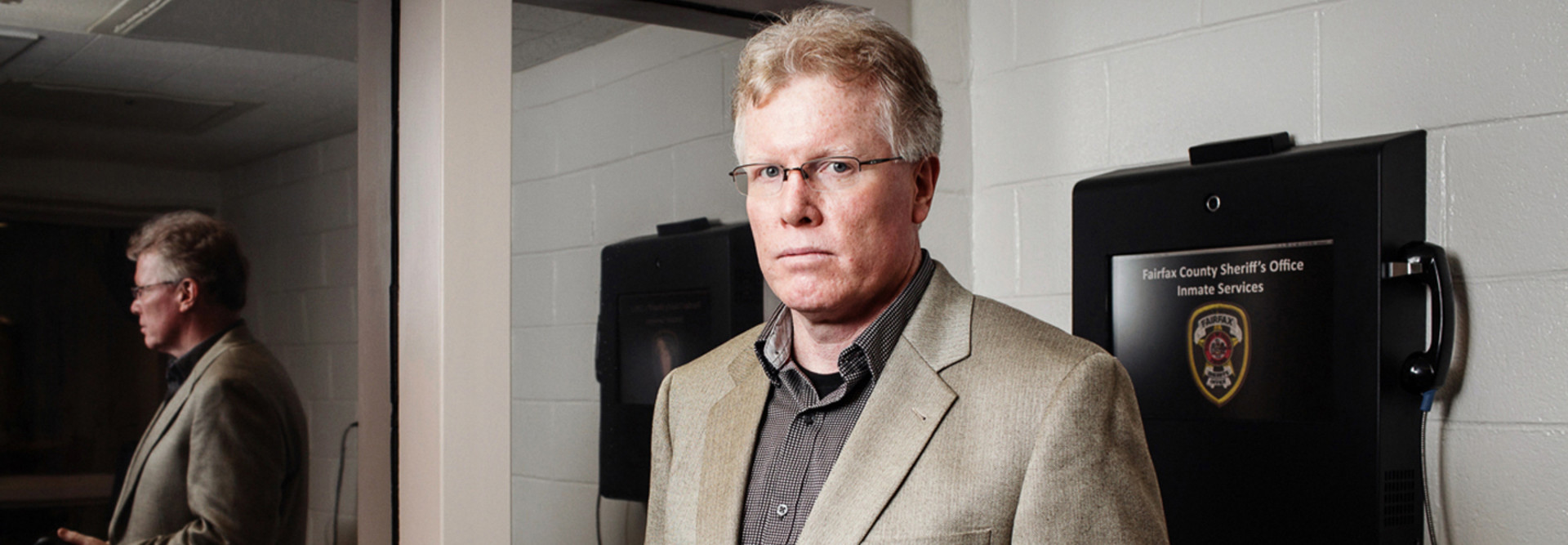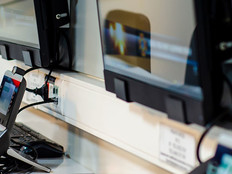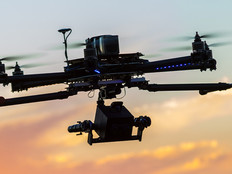Safety Measures: Tech Boosts Security for Law Enforcement
The Fairfax County Sheriff's Office knows all too well that managing hundreds of inmates on a daily basis can be a labor and paper-intensive process. That's why the Northern Virginia agency has embarked on an ambitious plan to streamline its systems using a variety of technologies.
The initiative began by modifying an idea borrowed from Apple Store's checkout process — using barcodes to track and manage each inmate in the Adult Detention Center, says Richard Smith, IT branch chief for the Sheriff's Office.
The Benefits of Barcodes
Using Primera PX450 label printers, the Sheriff's Office prints barcoded labels that fit into the wristbands worn by more than 1,200 inmates. About 400 deputies use a Wi-Fi–enabled iPod Touch and a Linea Pro barcode scanner to scan inmates' wristbands, accessing data such as identification, the languages they speak, their dates of incarceration, what charges they're being held under, the housing unit they've been assigned to, and much more, Smith explains.
Going digital benefits the inmates too, Smith adds. In the past, when an inmate had a question — say, how much money was left in his commissary account to purchase snacks or personal hygiene products — he'd complete a paper request and wait. Two days later, the answer would come back, again on paper. With the new system, a deputy can scan the prisoner's wristband and call up his current balance, as well as the last 30 days of transactions, then provide an answer on the spot.
"We are doing everything we can to reduce touches on paper," says Smith. "We expect that simply being able to answer the inmate account balance question will save us an hour and a half each day."
Using other digital technology, Fairfax County will soon change the way inmates receive visitors. A video kiosk powered by a Mac Mini in each housing unit will enable inmates to enjoy virtual visits with their loved ones, either from the visitor's home PC or via a video kiosk in the lobby. When a visitor arrives, the inmate will be notified via Samsung flat-screen digital signage.
Going high-tech will increase both the safety and frequency of visitation, says Smith. Inmates won't need to be guided by deputies through hallways, and Sheriff's Office personnel won't need to carefully schedule visits in order to keep members of rival gangs separated. "This will allow us to increase visits from just weekends to weekdays," he says.
Like Fairfax County, law enforcement agencies across the country are using IT in innovative ways to improve safety while cutting costs. For instance, notebooks and tablets arm officers with the information they need on the road, while video recording systems and wearable cameras document their interaction with citizens.
Police Departments Turn to iPads for Safety
Three years ago, Jefferson City, Tenn., police began cruising the streets with a new crime-fighting partner — the Apple iPad. The department's 21 patrol officers use tablets to access criminal records, take notes and file reports from their squad cars. Verizon Jetpack mobile hotspots provide each car with broadband, while Jump Desktop software enables officers to log on to virtual desktops back at headquarters.
Productivity gains that U.S. police departments would realize annually by adopting mobile technology
SOURCE: "Gov on the go: Boosting public sector productivity by going mobile" (Deloitte University Press, February 2013)
Tablet PCs are less expensive and safer than notebook computers, explains Greg Gass of Computer Assist, Jefferson City's IT consultant. "When you put a laptop inside a squad car, you're essentially giving up the passenger seat," he says. "And if the car is in an accident, it becomes a dangerous projectile."
Officers regularly bring their iPads to Gass so he can ensure they're adhering to department policies by not installing apps, copying sensitive data or sharing it on social media. He prefers handling each unit personally rather than using mobile device management tools.
"My rule is to keep it as simple as possible," he says, noting that remote management tools require IT training for end users. "We want our police officers to focus on doing police work, not computer work."
Video: A Silent Partner
Technology has given the Lubbock Police Department a new view on crime. Last March, the Texas city outfitted its 12 motorcycle officers with ruggedized Vievu LE2 body cameras, says Sgt. Jason Lewis, public information officer for the department. The 3-inch-by-2-inch cameras fit onto officers' uniforms and can store up to four hours of video at 640x480 resolution.
Upon approaching a vehicle, a motorcycle officer activates the camera by flipping open the lens cover. "The camera captures a bird's eye view of what I'm doing," says Officer Brooks Jennings. "I get a good shot of both the vehicle and the violator, and it captures good audio, so it's clear what they're saying."
Every other day, Jennings hands his camera to his desk sergeant, who uploads the videos to a computer where they're stored for 90 days — longer if used as evidence in a trial. The best feature the camera offers, however, is peace of mind. If a dangerous event happens during a traffic stop, the Lubbock Police Department will have evidence to identify and capture the culprit.
"Whenever I walk up to a violator's window, the person could be someone who wants to take my life," Jennings says. "If I'm shot or otherwise hurt so badly I can't speak, my department still has a good video of the violator and his vehicle. Even if it doesn't save my life, the next officer has a heads-up."
Tweets on the Beat
When the Cambridge, Mass., police are on a call, residents don't need to tune in their police scanners to find out what's happening — they just check their Twitter feeds.
Be it suspicious packages, street blockages, armed robberies or kidnappings, locals are instantly alerted in 140 characters or less, says Dan Riviello, director of communications and media relations for the Cambridge Police Department.
14:49 Report of possible SUSPICIOUS PACKAGE at CAMBRIDGE COMMON / GARDEN ST & WATERHOUSE ST in #CambMA
— Cambridge Police (@CambridgePolice) January 13, 2014
The police department has been using Twitter for three years, mostly to distribute department news. But last February, it began tweeting reports about crimes in progress and their locations. Since then, the account has grown to more than 15,000 followers, and feedback has been positive.
"We are always looking for more ways to share information with the public and find out what people in the community are doing," Riviello says. "Twitter is a great way to do that. A more informed community is a safer community."









